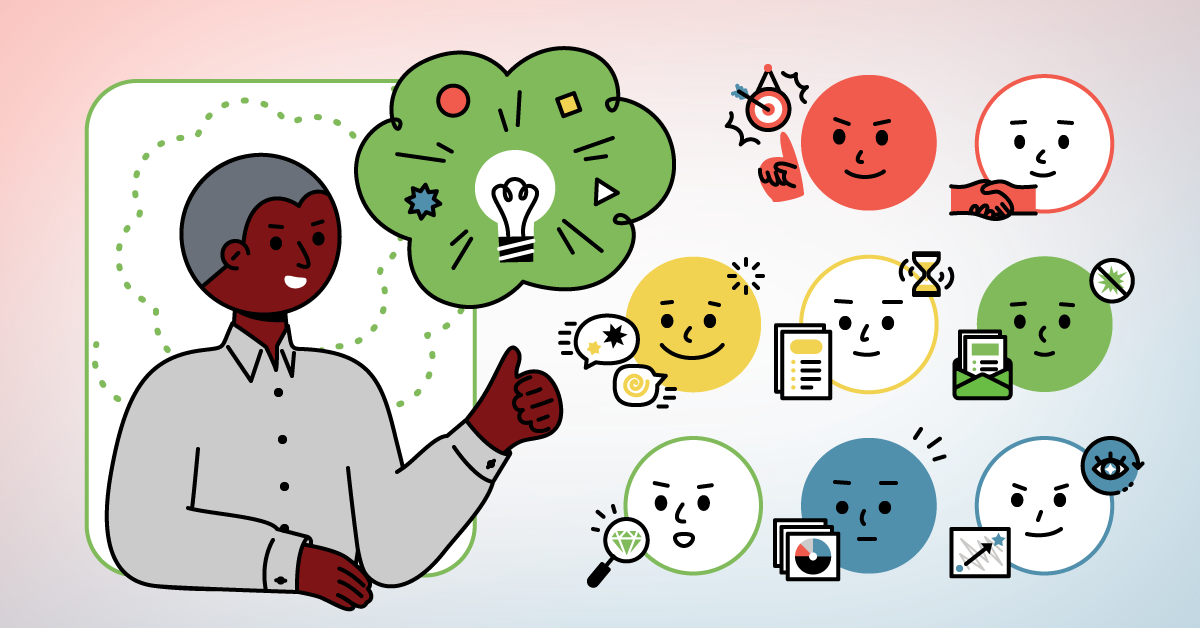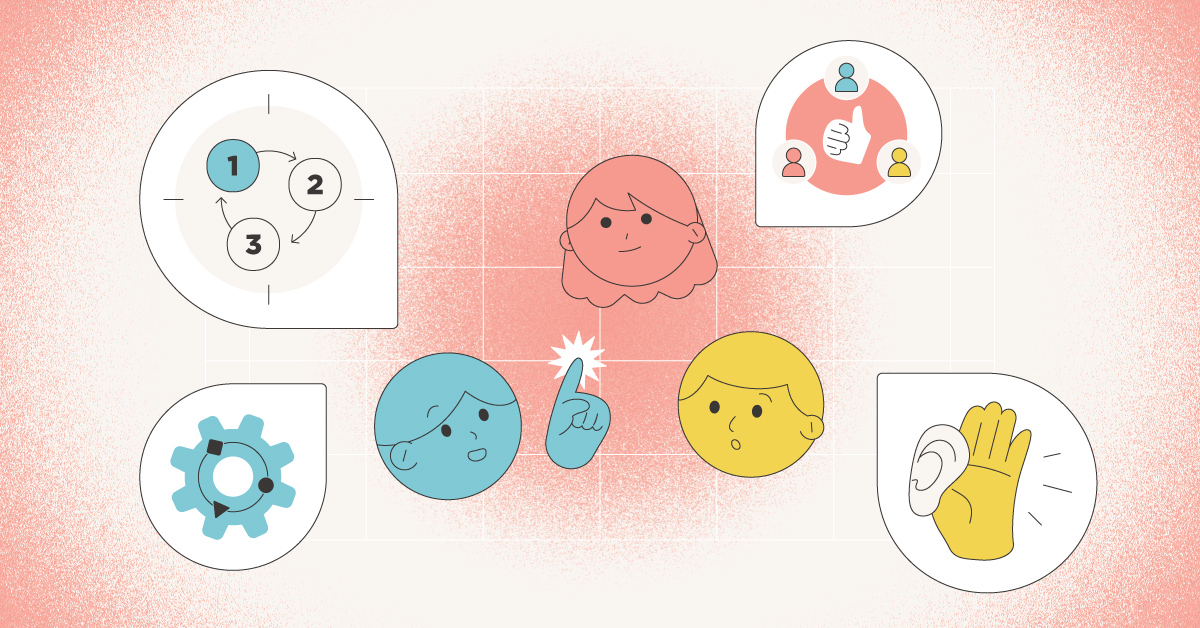
Strong selling skills are necessary for any professional, regardless of position. Finding yourself in a selling mindset can happen when you’re interviewing, negotiating, brainstorming, or advancing in your current role.
Each DISC type needs to know how to sell to other behavioral types!
- DISC Selling Skills for Direct Communicators
- DISC Selling Skills for Reflective Communicators
- DISC Selling Skills for Outgoing Communicators
- DISC Selling Skills for Reserved Communicators
- DISC Selling Skills for Steady Communicators
Let’s dig into selling skills for Dynamic behavioral styles!
The Dynamic Communicator In-Depth
Dynamic people, or Low Ss, love jumping from idea to project to task, without slowing down. They are open and confident when it comes to sharing information, and they prefer lively, fast-paced conversations. They are energetic and outgoing but can come across as impatient or agitated.
Low Ss need a rapid pace in their work, an open environment to discuss ideas, and a team where responsibility is fairly distributed.
Dynamic people can thrive in a high-pressure environment like sales, but their fast pace can be deterring to more hesitant buyers. They might become frustrated if a buyer has a lot of questions and can lose interest in a deal if it’s not moving fast enough.
How Dynamic Communicators Can Sell to Every Behavioral Type
Dynamic Communicators Selling to Direct Communicators (High D)
The Direct communicator is looking for results.
Direct communicators are ambitious, forceful, decisive, strong-willed, independent, and goal-oriented. In general, they prefer to get to the point as quickly and concisely as possible.
This is a great match-up for the Dynamic communicator! There’s traditionally a lot of overlap with these behavioral types, so Dynamic people can feel confident going toe-to-toe with Direct folks. The important thing to remember is that high Ds want a brief, bright and formal interaction, whereas low Ss are looking for the next exciting thing and might not be hung up on keeping things professional.
The Dynamic salesperson needs to toe the line in this interaction — feel free to match Direct energy while keeping all parties on task. You need to let the Direct buyer ‘win’ this interaction. That doesn’t mean being a pushover, but it does mean doing some work behind the scenes. By framing your desired outcome as a solution to their problems, you will allow Direct communications to have the last word and close the deal on their timeline.
Dynamic Communicators Selling to Reflective Communicators (Low D)

The Reflective communicator is looking for an agreement.
Reflective communicators are cooperative, low-key, modest, and mild. They tend to engage people by being agreeable and thoughtful, so Dynamic people likely won’t have issues getting along with low Ds. The issue becomes making sure that you don’t overwhelm them — Reflective communicators will try to accommodate you at the moment but can disengage in the future if you get too aggressive.
The best thing you can do is focus on actively listening. Make sure to over-prepare with answers and data, and frequently ask if the Reflective buyer has any questions. More than likely they will and they’ll appreciate you taking the time to make room for their concerns. Follow up in writing after the interaction and don’t expect a fast close. Patience is key!
Dynamic Communicators Selling to Outgoing Communicators (High I)
The Outgoing communicator is looking for the experience.
Outgoing communicators are people-oriented, optimistic, and enthusiastic. They are creative problem solvers and are skilled at negotiating conflict. They prefer a fast pace and will be able to match your speed in conversation. They will also appreciate your confidence and will likely try to make a connection with you.
The conversation is going to flow between a high I and a low S. If things are going well, this deal will move quickly. However, you need to make sure that you’re staying on task and guiding the interaction to a favorable outcome. Don’t talk down to an Outgoing buyer— their high energy is not naivety and reading it as such will make them disengage.
Dynamic Communicators Selling to Reserved Communicators (Low I)
The Reserved communicator is looking for mutual benefit.
Reserved communicators are restrained, controlled, and reflective. They prefer to be socially discreet and can struggle to engage with styles very different from their behavioral style. This can be a difficult interaction because low Is take a long time to engage while low Ss disengage quickly. Reserved communicators need time and proof to trust, far beyond the patience of a Dynamic communicator.
The key to working well together is to slow down. It won’t feel natural but it will help you build trust and a stronger connection. Frame it as a challenge to yourself and focus on actively listening and providing the facts that a Reserved communicator needs. Don’t expect a quick close — provide the necessary information and let the low I buyer review on their own time.
Dynamic Communicators Selling to Steady Communicators (High S)
The Steady communicator is looking for understanding.
Steady communicators prefer a slow pace, defined responsibilities, and clearly outlined expectations. They are considerate, compassionate, and accepting of others, but might seem indifferent or hesitant on the surface.
Dynamic communicators and Steady communicators are obviously on opposite sides of the Steadiness factor, but that doesn’t mean this is a disadvantageous matchup. Steady communicators value a conflict-free environment and will likely adapt to make you more comfortable — return the favor and focus on a warm, patient approach!
Ask them what information they need to move forward confidently and provide it; follow up with it if you don’t have it on hand. They will appreciate your thoroughness, and the effort will go a long way to proving to your Steady buyer that you are serious about their needs in this sale.
Dynamic Communicators Selling to Dynamic Communicators (Low S)

The Dynamic communicator is looking for new ideas.
It’s time to do some self-reflection! Selling to a Dynamic communicator will be easy or difficult depending on your approach. The key to success here is focusing on what they value. You know firsthand how disengaging it is to be disregarded.
You can’t let your priorities dictate this sale — have a straightforward conversation about the problem they need to be solved. Your fellow low S will appreciate your candidness and then you can focus on getting the sale underway. Get ready for a fast close!
Dynamic Communicators Selling to Precise Communicators (High C)
The Precise communicator is looking for information.
Precise communicators are dependent, neat, careful, and compliant. They want to get the job done right and thrive on establishing routines and processes to follow in the workplace.
Dynamic communicators traditionally don’t have a lot in common with high Cs, but there is one thing you can agree on: your straightforwardness! Both Dynamic and Precise communicators prefer clear, blunt communication so use this to your advantage and get matter-of-fact. You don’t need to waste time trying to sell a vision; come prepared with facts and proof of concept, and a Precise person will appreciate it.
Dynamic Communicators Selling to Pioneering Communicators (Low C)
The Pioneering communicator is looking for a vision.
Pioneering communicators are independent, unconventional, experimental, and outspoken. They like finding the best outcome with the best possible means, no matter how random or experimental. This free-wheeling nature is a great fit for Dynamic communicators! Both of these behavioral types are willing to forgo procedures and structure to chase a favorable outcome.
It might be difficult, but this means that your job in this interaction is to keep the sale on track. Don’t let yourself lose interest if they’re not focusing on what you want — low Cs want to see the big picture. Make sure to stick with it until they do and then get ready for a quick close!
Make the Sale the Dynamic Way!
Dynamic communicators can harness their confidence and fast pace to their advantage in the sales process, so long as they are conscious of the pace and positioning of others.
Are you interested in harnessing the power of DISC? If you’re ready to start using DISC today, TTI SI can help!
Do you want to take a DISC assessment or start using assessments for your team? Let us know here.
Are you interested in joining our network as a reseller? Get the info you need here.




